ABOUT SHARPLANINATZ OR YUGOSLAVIAN HERDER
Story about Sharplaninatz goes back centuries into the past. Gigantic mountain range Of Balkan called Shar-mountains, surrounded bytwogreat rivers contributed to thepreservation ofthe breed Sharplaninatz (Yugoslavian Herder) and preventedastrongerinfluence of otherdogs on them in this area.
Shar-mountains are mountain range length up to 80 kilometers and a width of up to 20 kilometers penetrates deep into theheavenlyheights. The mountain that roughly divides endless sky and expanses of lands exudes of awe and admiration.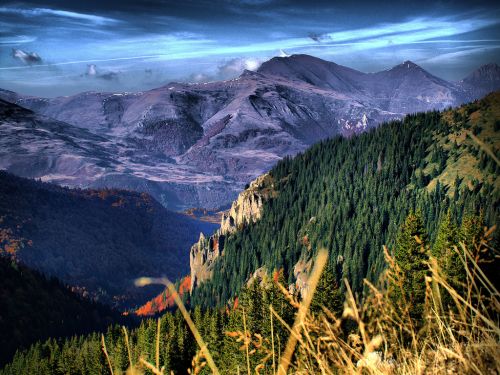
Eagles and Hawks the only masters of the sky with their songs and flights celebrate existence and courage of Sharplaninatz breeds. To protect helpless animals from attacks of wolfs and other beasts, God himself gave that breeds which survive all ruthless struggles.
Illyrian sheepdog exudeshiscalmness, confidence, strengthandperfect harmonyof his body carved from deep of Shar-mountain as a symbol of her eternity, beauty, power and protection.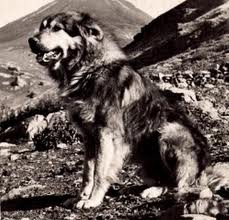
At the foothill of endless areas of Shar-mountain forest has always been a habitat for wild, large and dangerous animals but also lot of meadows suitable for sheep and goats where Sharplaninatz was for centuries used as a guards and protectors of herds and shepherds. Very often it was used as a house keeper and protector of the family. Also was a tradition of women going to work in the field, accompanied by one of these dogs. Children who are left alone at home were entrusted with one or more Sharplaninatz.
In 1928th the Sharplaninatz were for the first time taken from Shar-mountain for the purpose of Royal army and later in the former Yugoslavia, these dogs were mostly used by the police and army. They were characterized by strength, courage and intelligence. Not to make friendship with everyone, but cautiously and carefully choose friends. Never fully trust anyone and follow his inherited behavior gene, at all times on the alert to defend humans or themselves, sometimes at the cost of life.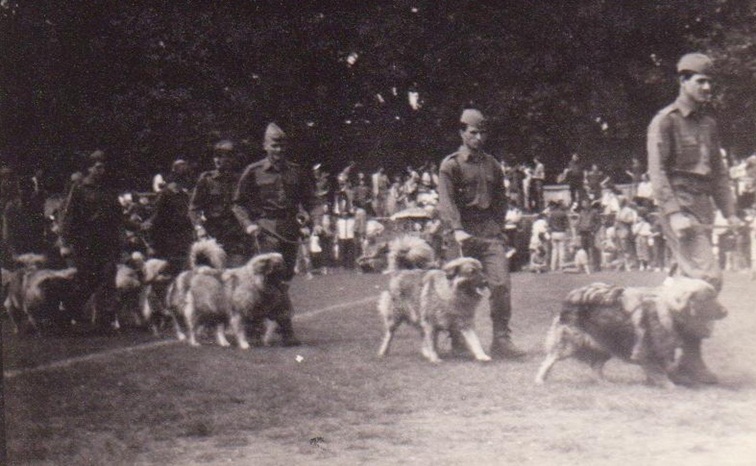
Generally the Sharplaninatz are very balanced dogs and have calm temperaments but with a very strong sense of protecting its own territory and family.
Man who accepts the challenge to be their master, should have a strong character and a wealth of experience with dogs because Sharplaninatz demands fair and consistent master who will provide him with unconditional love and respect, and in return will receive immeasurable love and devotion.
Many studies, publications and reports testify about these breeds as a direct descendant of the wolf.
THE STANDARD OF SHARPLANINATZ BREEDS
Breeds name: SHARPLANINATZ – YUGOSLAVIAN HERDER
FCI clasification : FCI II.
Country of origin: THE FORMER YUGOSLAVIA
In 1939th the FCI has registered those breeds under the name “Illyrian Shepherd”.
During registration the breed standard was not yet attached and it’s still unclear whether it was Sharplaninatz or Karst Shepherd dogs.
During World War II, lots of documents were lost, as well as a large number of those dogs have lost their lives.
After the war, at 1957th FCI has requestedrenewal ofregistration andin the same yearregistered breedcalled”Yugoslavian Herder –Sharplaninatz”
For a long timetheexport of Sharplanintzoutside the bordersof Yugoslaviawas banned. Finally in 1970 year Yugoslavauthorities liftedthe banandallowed theSharplaninatz to be sale inWestern Europeandthe United States.
Sharplaninatz are large and strong dogs with strong muscular and robust structure, having long and thick top coat. Their top coat paint is usuallya steelgray, lightbeige, blackorspeckled with all shadesof gray. The most commoncolorationisblack andgrayanddark gray. Multicolor is not allowed. Allowed colors almost neverclearly separated but usually spilled diffuse on top of each other. For head color or for thedistribution ofcoloron the headoften knows by the term “marble”. Their eyes are almond-shaped, with light or dark brown color.
The average height of an adult male ranges from 70 to 75cm and females 65-70cm and average weight of an adult male ranges from 50 to 60 kg, and adult females 40-50 kg.
GENERAL APPEARENCE
Powerfull with strong bones, well-connected dog, above average height, overall harmonious structure. Covered with long, thick and rather rough coat. Strong constitution, calm temperament, benign but very sharp dog. Loyal to his master and incorruptible.
HEAD
The head is proportional to body size and is about 25 cm (or about 40% of the height at
withers). The skull is slightly longer than the muzzle in average of 58%, or 42% of the total
length of the head. The female muzzle is slightly longer (57% : 43%). From the profile lines
of the forehead is slightly rounded and the muzzle is flat, mutually both lines are slightly
convergent.
FOREHEAD ( CRANIAL PART OF THE HEAD)
Dry, wide, medium frontal line is expressed. Viewed from above and over side forehead is
slightly convex and rounded. Arcs bugle is not expressed. The transition between the skull
and the muzzle is slight.
MUZZLE
Muzzle is shorter than the skull with wide and deep, gradually and gently tapered toward
the top. The nostril is straight and wide, the profile of the lower jaw from the sloping arch
becomes a straight line, which is diverges. Nose is broad and with black pigmentation
LIPS
Medium thickness and nestled. The upper lip is slightly exceeding the lower. The corners of
the lips are closed, without bridles.
TEETH
Scissor and completely
EYES
Almond-shaped, dark or light brown, with a calm but piercing and fearless expression. The
eyelids, as well as all visible mucous membranes are black pigmented.
EARS
Placed at imaginary line connecting tip of the nose and the inner eye angle, or slightly lower
hanging, set on the head in the form of the letter “V”, or medium length, reaching the inner
corners of the eyes covered with short and dense coat.
NECK
The upper profile line in the upper part of the neck is slightly convex or straight and the
bottom is flat. The neck is medium length. Due to thick hair looks shorter, deep, wide and
muscular, with a head and body well connected and without abrupt transitions. The neck
is slightly elevated compared to the line of the back. The skin is tightly – without dewlap
(folds). The hair is thick, long and sharp, at the turn of the head to the neck makes a distinct
necklace, which apparently increases the width and depth of this part of the head.
BODY
The top line of the body is flat or slightly down from the withers towards the haunch. In dogs
bred in the mountains tolerated slight difference. The hull is slightly longer than the height.
Seen as a whole, the front legs are proper posture, in proportion to the body and the height
of the elbow is about 55% of the height at the withers. Some parts of the front legs are in
proportion with each other and with the body.
THE REEF: Gently expressed and wide. The neck and withers connection are strong with
gentle transition.
BACK: Straight and broad, not too long. The loin is short, wide and muscular.
CROUP: Medium long, slanting backwards, broad and well-muscled.
THE RIB CAGE: Chest is deep, and its bottom line reaches at least to the elbows, medium
long with gently rounded ribs. The chest is broad and muscular. The volume of the rib cage
should be at least 20% greater than height of the reef.
STOMACH: Tight and muscular. Underline the stomach rises gently towards the back
LOINS: relatively short with specified transition
SHOULDER: Sufficiently long and wide Well connected to the thorax, slightly slanted and
horizontal forming an angle of 65 degrees. Muscular upper arm from the shoulder, making an
angle of about 55 degrees. Elbow angle (between the upper arm and forearm) is about 145
degrees.
ELBOW: wide, properly set slightly away from the rib cage.
THE PAW: Powerful, convex toes, Spoon shaped. Nails darkly pigmented, solid, cheekbones
and plantar dark to black pigment, strong but flexible
TAIL
Long and reaches at least to the hock. The hip line continues to topline tail without sudden
transitions. The tail is basically a powerful and gradually tapering towards the top. Coated by
a thick and the lower part of the long hair, which makes it bushy. The tail is saber, in the heat
of the moment over the back line, raised and curved.
HIND LEGS
Attitudes of the hind legs viewed from behind are regular and slightly wider than the
front legs. Viewed from the side are also regular and angles sufficiently closed. The
thigh is muscular, strongly rounded, sloping and forming an angle with the horizontal
as well as a similar shoulder. The angle of the knee is more open than the shoulder
(approximately 125 degrees). The knee is strong and broad. The shank is slanted,
strong enough to deep muscle and a distinct flags.
WALK
Walk is rich long and easy. Most often is medium long, but with high trot. The gallop is a little
more difficult, but with long and rich jumps.
SKIN
Medium thick and flexible. Close to the body and tightly stretched without wrinkles. All visible
mucous membranes are black or with dark pigmentation.
THE HAIR
The dog is solid colored. Permitted are all shades of color from white to dark or almost
black. Most preferred is gray-green and dark gray. Colors are not allowed. In all pigmented
dogs basic color is most pronounced in the upper parts of the head, neck and hull. In the
lower parts color (pigment) gradually fades into the lower parts of the legs in lighter color
(dirty gray or yellowish).
LENGTH
The body is slightly longer than the height of withers (the males of 8-10%, and female 10-
12%)
MISTAKES
EASIEST MISTAKES: Insufficiently wide skull, underdeveloped jaw, insufficiently wide and deep
chest, too flat or too arched ribs, fewer defects in leg posture, slightly shorter hair, slightly
shorter tail, rabbit’s feet, as well as other lighter faults.
HARDER MISTAKES: Too long (pointed) muzzle, ears are set high and not enough folded over,
Saddleback, the tail is sideways, lymphatic constitution, as well as any other serious faults.
ELIMINATING FAULTS
The great disparity between length and height, insufficient ridge height, insufficient length
hair (below 7 cm), multicolored, brindle, depigmentation in the visible mucous membranes
and eyes, degenerative phenomena , express O and X leg posture, congenitally short tail or
without tail at all, very sagged back and other degenerative phenomena.

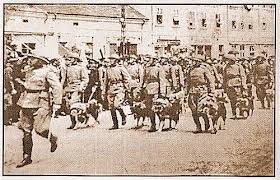
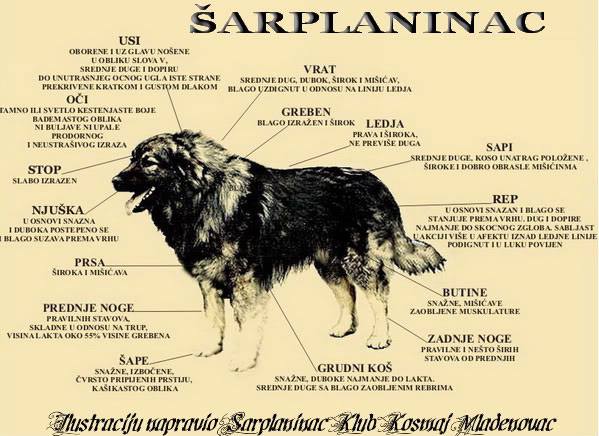
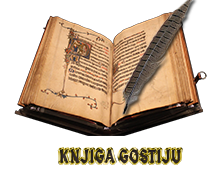 .
.